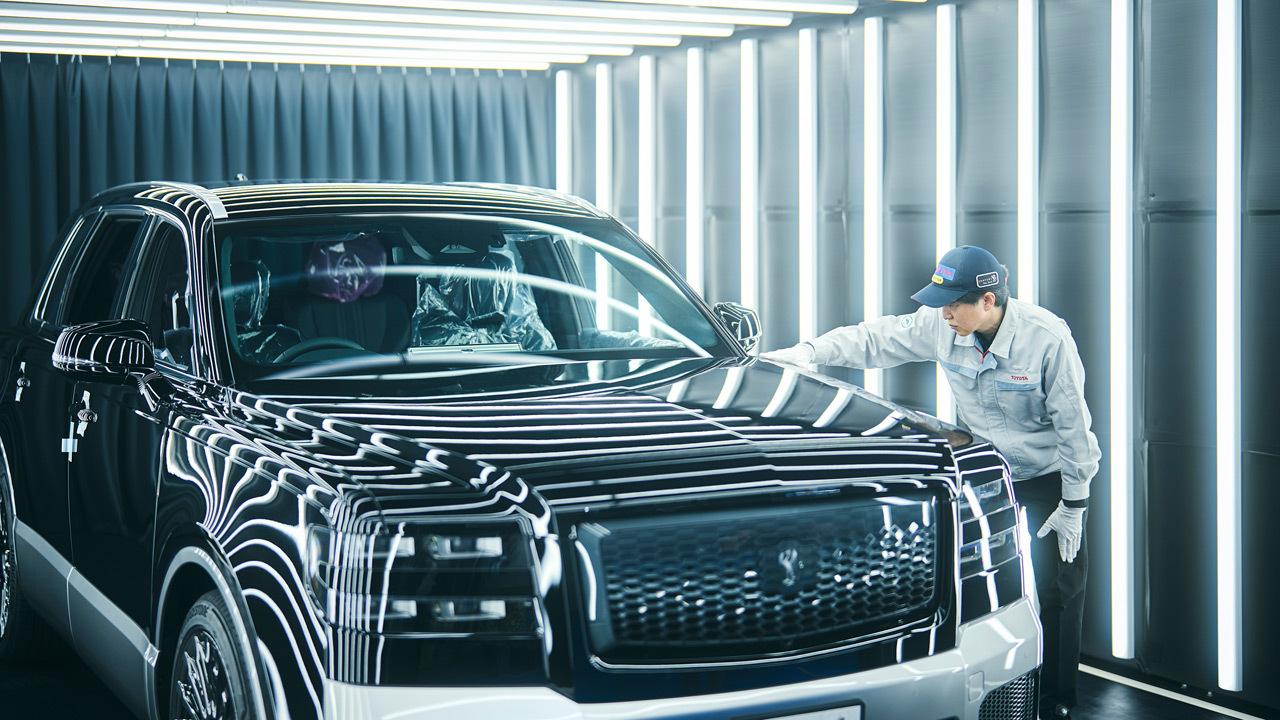
This is an ongoing series looking at the master artisans supporting the automotive industry. In the 16th installment, we hear from a master inspector who safeguards the Century's quality through a special process.

Handwork still plays an important role in today’s car manufacturing, even as technology like AI and 3D printing offer more advanced methods. This series features the craftsmanship of Japanese monozukuri (making things) through interviews with Toyota’s carmaking masters.
To mark the recent launch of a new Century, this is the third in a special five-part series showcasing the craftspeople who work on the model.
We spoke with Moriaki Higa, a master inspector who upholds the Century’s high-quality standards. Overseeing the production line’s final process, he checks everything from painting finishes to the precision of interior and exterior assembly, along with driving noise and comfort.

#16 Moriaki Higa, a master inspector who makes the final quality checks across all aspects of a vehicle
Expert, Quality Inspection Section #2, Quality Control Div., Tahara Plant, Toyota Motor Corporation
The Century’s unique inspection process
Every process in car production, from body panel stamping to welding, painting, part fabrication, and assembly, is performed with the utmost care. Many of these processes have also been automated.
Manufacturing standards on the Century, in particular, are far stricter than those of other models, as showcased in the previous two entries in this series.
Yet despite taking meticulous care, paint defects and assembly faults are difficult to eliminate entirely.
This is what makes inspection, the production line’s last process, so important. It involves final checks into every aspect of the finished vehicle, from interior and exterior quality to ensuring that all features function properly, as well as testing for irregular noises and other issues that affect driving. In other words, inspection is the last line of defense safeguarding the car’s product quality.
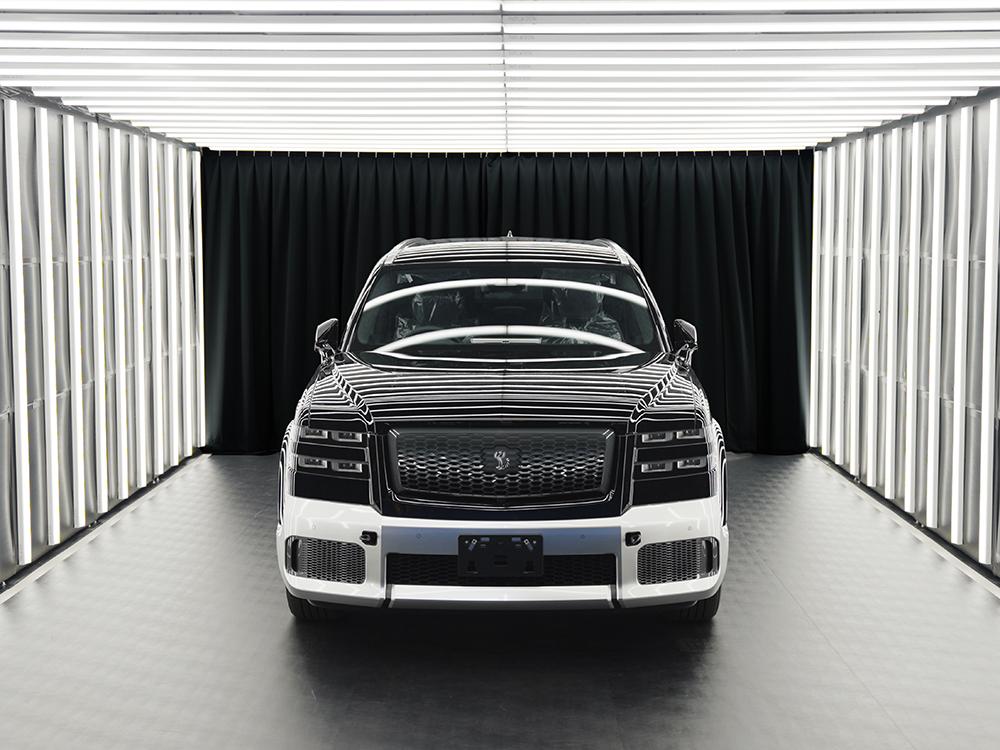
To manufacture the latest Century, Toyota’s Tahara Plant in Tahara, Aichi Prefecture, established a completely new inspection system.
Typically, the process is divided among multiple inspectors, each overseeing a specific vehicle element. The approach adopted for the new Century, however, assigns the entire process to a single inspector, who bears responsibility for checking the whole vehicle.
This arrangement allows craftspeople with exceptional skills and knowledge to harness their ingenuity, guaranteeing the highest quality.

This change was accompanied by a new certification system for inspectors, which ensures they meet the following requirements: thorough, experience-backed knowledge of the customer perspective; the skills and expertise to perform the entire process at a high level; and the ability to embody monozukuri that grasps the developer’s vision. Only those certified as master inspectors can work on the Century.
Toyota Times interviewed Moriaki Higa, currently one of the Century’s two master inspectors. Previously, Higa had been involved in the Lexus inspection process, mainly checking the quality of exterior finishes. Upon hearing about the Century project from a supervisor, he eagerly threw his hat into the ring.
Higa
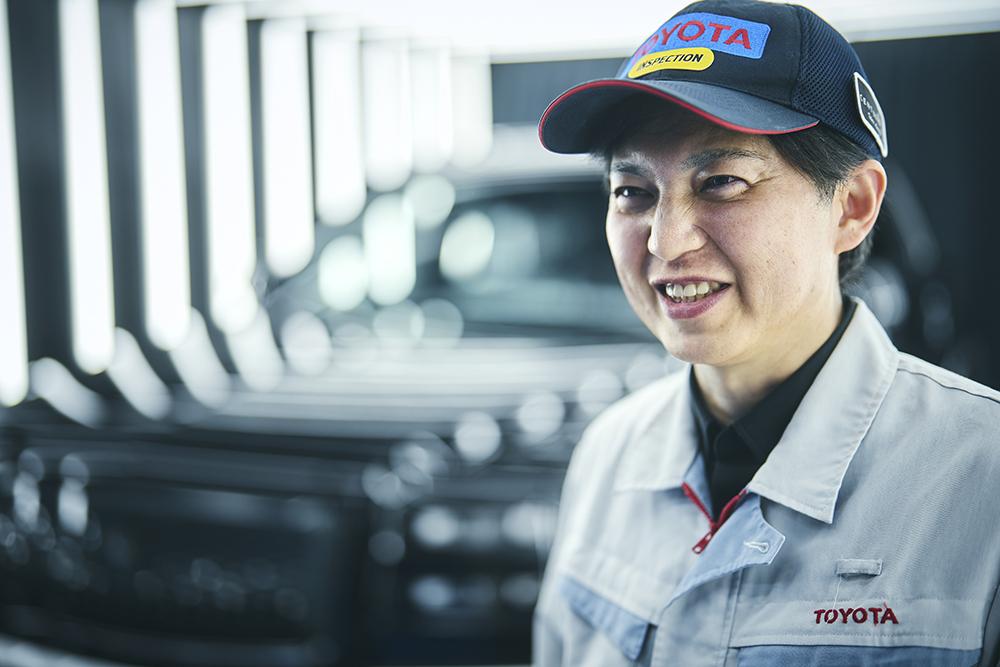
I put my hand up and said I’d love to do it! In a standard inspection, each person works within a limited scope, but with the Century, you oversee the whole process. That’s what drew me to it.
The Century is a special car with a proud tradition, and I remember being delighted when my supervisor informed me of the result.
At the same time, I felt the pressure of knowing that my performance across the entire inspection process could impact the customer experience.
Self-propelled transport in EV mode
Initially, no inspectors possessed all the wide-ranging skills required for the Century’s inspection process. After being certified as a master inspector, Higa first embarked on fifteen months of training.
Since production had not yet started up, Higa stayed on the Lexus inspection line, training in the tasks where he lacked experience while also helping to establish the Century’s inspection procedures.
So, what is involved in inspecting a Century?
First, once assembly is complete, the finished car is checked to ensure a beautiful, high-quality paint finish.

This step occurs in an inspection booth with side walls and ceiling fitted with evenly spaced fluorescent lights. Their reflections on the vehicle’s body help to identify any deformation in painted surfaces. In addition to fluorescent lamps, lighting that matches the frequency of sunlight is also used to check how the car presents under natural light.
In all, each inspection consists of 17 steps, which include checking for gaps and unevenness at body panel joints, the interior and exterior specifications, and the engine bay.
Higa
In terms of the luster and smoothness of paint finishes, the standards are stricter than for Lexus.
What’s more, time-consuming painting inspections are usually performed only on a sampling of vehicles, whereas we check every single Century.
If we uncover a problem with the finish, the car is returned to undergo a corrective process we call the coating clinic.

Once the fit-out inspection is complete, the car moves autonomously to an inspection workshop for functional testing, which checks its driving, turning, and stopping performance.
Higa
When moving autonomously, the new Century takes advantage of its PHEV features to run in EV mode. The quiet inside allows us to check for unusual noises.
We also look for any other irregularities by emulating city driving conditions. This special process is perfect for the Century, requiring the ultimate quietness.
The functional inspection includes adjustments such as wheel and headlamp alignment; also entirely carried out to exacting standards.
From there, the vehicle takes itself back out to the test course for a driving inspection, which involves checking how it stops and starts under conditions that replicate city streets.
Higa
As part of the test course driving inspection, we take cars up to the high-speed range on the main track and also check for irregular noises by running in EV mode on cobblestones and other uneven, noisy surfaces. Driving in EV mode on different roads is a test we introduced specifically for the Century.
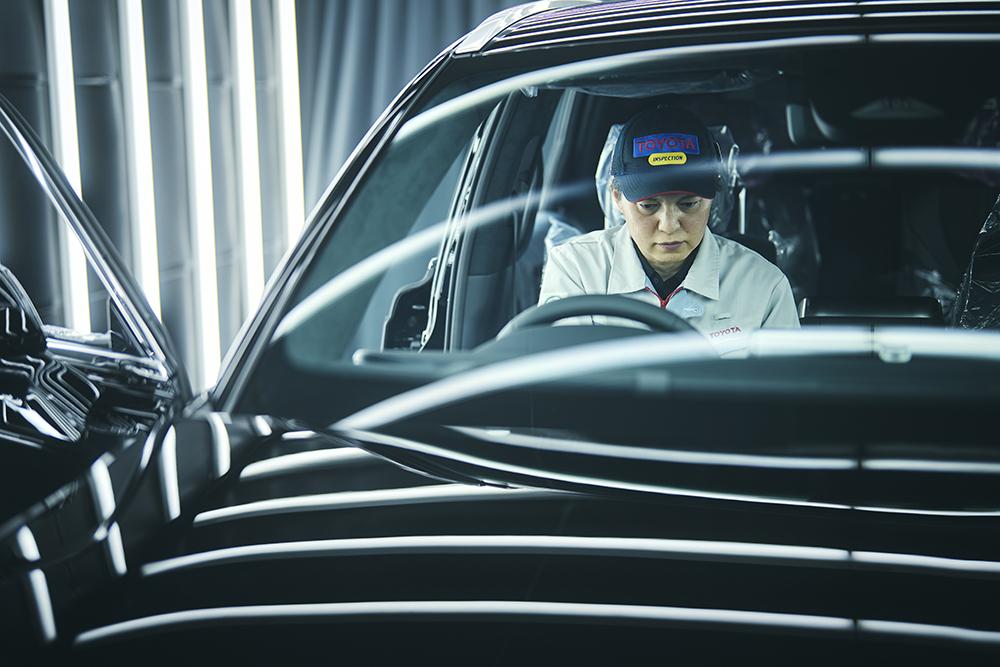
According to Higa, the Century is the only model produced at the Tahara Plant for which every vehicle is inspected on the test course. All these special inspection procedures have been adopted to maintain the new Century’s quality.
After driving on the test course, vehicles again move autonomously to the inspection workshop. There, a standard car wash is followed by cleaning with purified water used in the painting process, paving the way for the final inspection.
Higa
Since this water contains no impurities, droplets don’t leave residue on the body as they dry. This means you eliminate the risk of damaging the body when wiping away the water.
With the car washed, it’s time for a final check. Inspectors complete the process by applying protective films to the body and wheels, and then transport the vehicle to the shipping yard. From start to finish, inspecting a vehicle takes three and a half hours.

The key to being a Century master inspector
Born and raised in Okinawa, Higa has loved cars since he was a boy. Upon graduating from high school, he started working for a local car-related company, then joined Toyota at the age of 25.
Higa
I always loved Toyota cars like the Mark II and Chaser, so I decided to go for it and changed jobs to work in Toyota’s production sites.
From the outset, I was assigned to the Lexus inspection section, and I’ve worked in inspection ever since.
As a seasoned inspector whose career spans more than 20 years, Higa says the most difficult skill to master is discerning the precision of body assembly.
A car body comprises various parts, from engine hoods and fenders to door panels. Higa rigorously inspects vehicles to ensure the gaps and height differences between these parts meet the standards and are balanced on both sides.
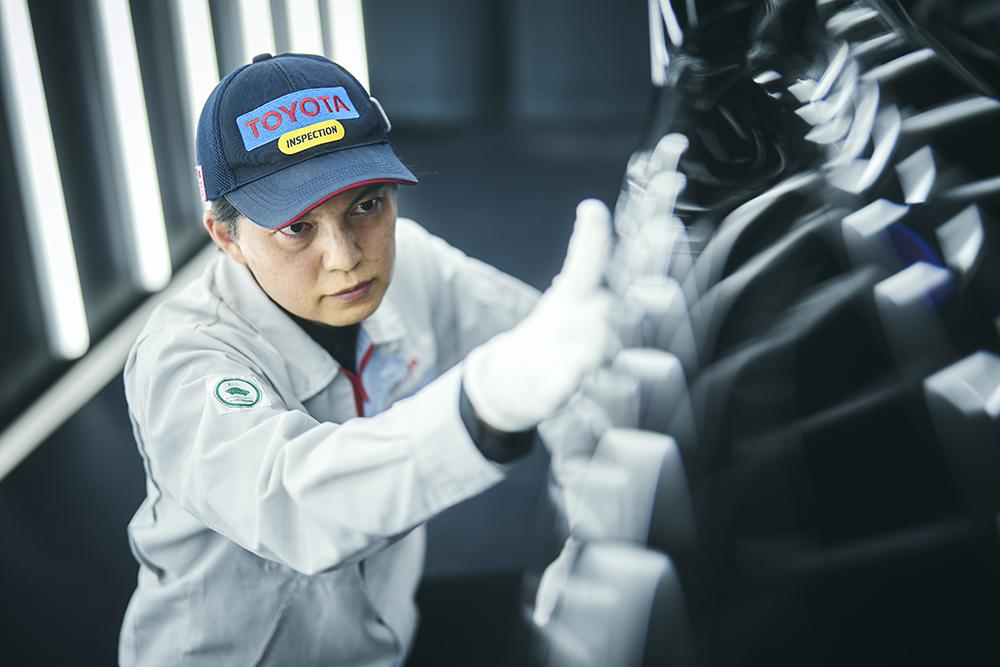
Higa
Although we have instruments to measure gaps and height differences, we typically check gaps visually and the heights with our palms. You can instantly judge whether something is good or bad by seeing and touching it.
Likewise, for the interior, we also check gaps, height differences, and left-right variations between parts. We touch, jiggle, and shift components to ensure they are assembled correctly and don’t make any unwanted noises.
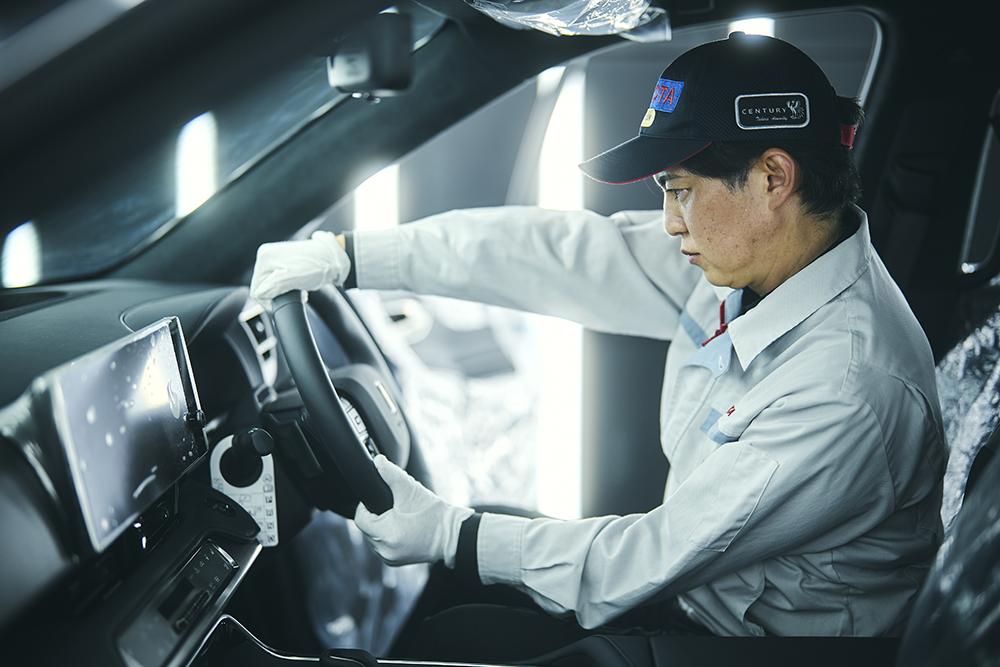
Given the many elements that must be inspected, using instruments is too time-consuming to be feasible. Instead, as Higa explains, inspectors must hone their eyes and hands through experience with hundreds, even thousands, of vehicles.

Higa
Personally, with something like the front and rear door gaps, I start with a visual check. Then, I measure with calipers to check the error margin. Repeated many times, this process helped improve the accuracy of my visual inspection.
The same method applies to improving your feel for height differences. I mastered it by going through the motions time and again.
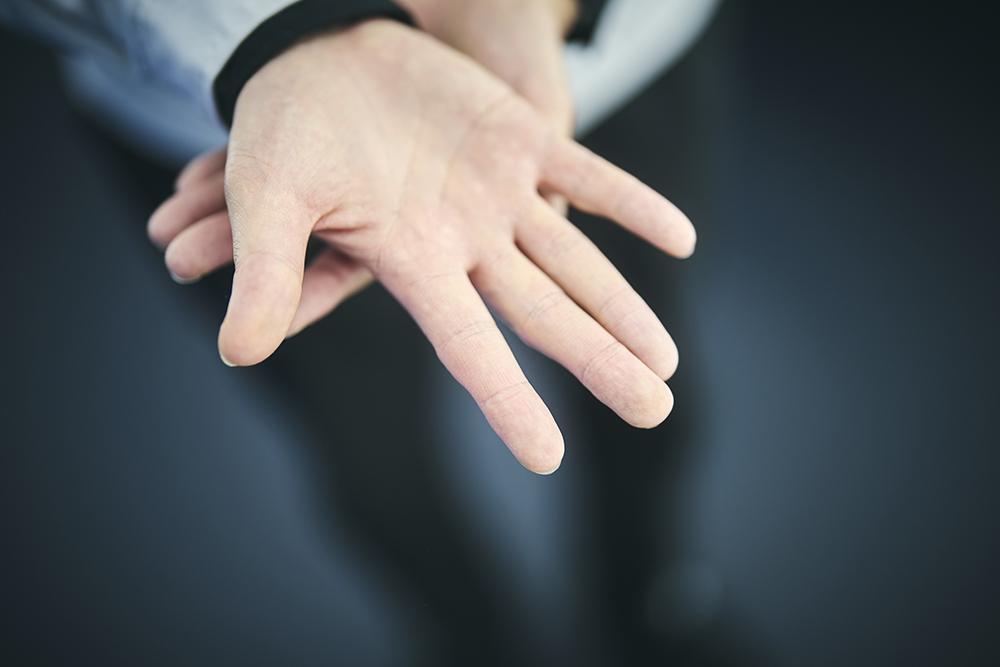
For a veteran like Higa, the most difficult aspect of Century inspection was figuring out how deeply to delve into each individual task, given that he had to handle the entire process by himself.
Higa
For example, test course driving inspections cover a wide range of speeds and an assortment of surfaces, from the main track to noisy and rough paved roads. Certain noises only occur at particular speeds or road conditions.
Adjusting your approach to detect irregular sounds is challenging, and you need to make sure you can pick up noise and vibration under any conditions. It took a lot of effort to master such skills.
Driving inspections are a complex art, and it’s not easy to reach the level of proficiency. I want to keep honing my skills on the next 100, 200, 300 vehicles.
As a Century master inspector, the key for Higa is adopting the customer’s perspective. What does that mean in practice?
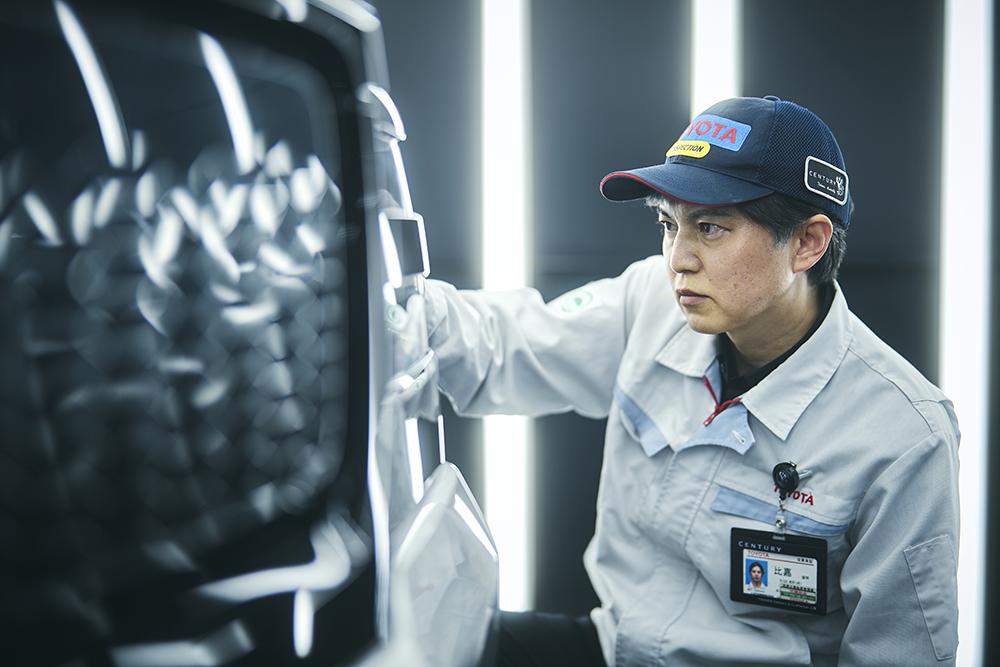
Higa
For the customer, what we are inspecting is their precious, irreplaceable car. As an inspection professional, I want to make sure that their experience is never dampened by a defect.
The Century has rigorous standards. The painting, for example, must be perfect down to tenths of a millimeter.
Every day, I devote myself to finding such faults that even the customers themselves would not notice.
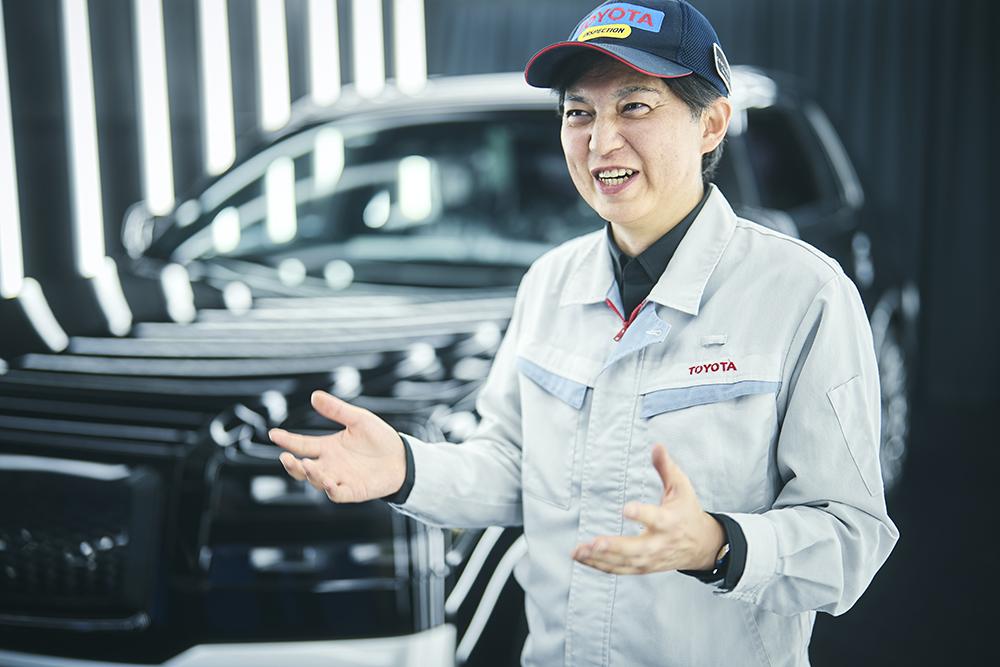
Higa is a self-professed car lover and long-time motor shows attendee. “When I see a car on display, I can’t help but notice the gaps, height differences, paint finishes, and assembly,” he says with a grin. As the last line of defense upholding the Century’s high quality, he no doubt helps bring smiles to Toyota’s customers.

